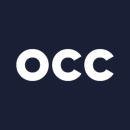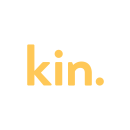Even the most vigilant micromanagers have had to relinquish control during the pandemic.
Stripped of their power to hover over cubicle walls without discretion, there’s less opportunity for oversight in the virtual realm.
It can sometimes feel like Zoom meetings were invented as a response to this loss of control. Video conferences allow us to update team members on our progress and share the scope of our work, but they can just as often feel like probation hearings in which employees offer assurance that they haven’t spent the day binge-watching Netflix.
Rather than scheduling meetings as merely accountability check-ins, though, some managers have found virtual gatherings ripe for collaboration.
“Optimizing meetings with cameras on, agendas planned, notes captured and decisions made has been critical,” said Sonya Caffrey, director of software engineering at Options Clearing Corporation. “We now consider meetings to be blocked time for collaborating.”
With the right tools, processes and attitudes, leaders like Caffrey have found ways to adapt and thrive in today’s work-from-home climate. As Built In Chicago learned through conversations with two local tech companies, creating space for collective accomplishments can fight complacency while ushering in a sense of urgency and practicality to the virtual workplace.
When it comes to remote collaboration, what’s an important lesson your team has learned since first transitioning to remote work?
I am a social person who has definitely missed the hallway conversations and in-person collaboration experienced while being together in the same space. One of the first lessons I learned was to rethink meetings. In March 2020, we all felt we had too many meetings, but with remote work, meetings became the way to connect and catch up with each other. During the first week of lockdown, I put a virtual happy hour in the calendar on that Friday at 4 p.m. I think I made it recurring for three months — just in case. This became the highlight of everyone’s week. As we onboarded new people to the team, this was the time we got to know them best. It wasn’t about work deliverables — it was about connecting.
It wasn’t about work deliverables — it was about connecting.”
How are you collaborating differently today than you were a year and a half ago? What steps have you taken to fine-tune your approach?
We have an hour every day from 10 a.m. to 11 a.m. for collaborating; we scrum, then roundtable, then peer review work and bring forward any challenges that need solving or decisions that need to be made. We work in real time, documenting and designing as we go, rather than waiting for someone to do it later. In March 2020, I onboarded our first new team member remotely and set up a recurring onboarding meeting. I’ve now hired and onboarded many other team members since then, and I still put that time on the calendar to collaborate on any onboarding topics or challenges new folks may need to work through.
Beyond Slack and Zoom, what tech tools have been particularly helpful in making remote collaboration easier and more successful?
In Q2 of 2020, our UX team introduced a new tool to help build an internal design system. What we didn’t realize at the time was how it would enhance our collaboration both within our team and for the other teams with whom we work. Product owners can comment right on the design canvas, and updates can be made in real time. In 2021, the tool functionality expanded and created a collaboration space, which we have fully embraced and will use any excuse to utilize. We have shared this tool with many others at OCC, and they are also actively using it to collaborate. We’ve even used it in our virtual happy hours, which are still happening 20 months later.
When it comes to remote collaboration, what’s an important lesson your team has learned since first transitioning to remote work?
The initial transition to remote work helped us understand that everyone being remote is a better environment than a few folks on the team being remote. Once all of our team members were remote, teams very quickly learned how to effectively use the tools at their disposal and which tools needed to be upgraded. The entire team learned how to be effective at engaging with each other.
How are you collaborating differently today than you were a year and a half ago? What steps have you taken to fine-tune your approach?
Zoom fatigue is real, and healthy collaboration requires breaks. We at Kin Insurance encourage people to skip out on meetings — all meetings are optional. We’ve also learned that, as we have become more distributed, we have to reemphasize core hours that cover various time zones. Folks are asked to organize meetings between 10 a.m. CST and 4 p.m. CST.
Zoom fatigue is real, and healthy collaboration requires breaks.”
Beyond Slack and Zoom, what tech tools have been particularly helpful in making remote collaboration easier and more successful?
Setting up GitHub boards that show when people need help moving work items along has been a great asset. This gives the team a central place to go in order to offer and receive help. Collaborative documents and spreadsheets like Google Sheets, where multiple users can live-edit work, have also been central to promoting remote collaboration.











